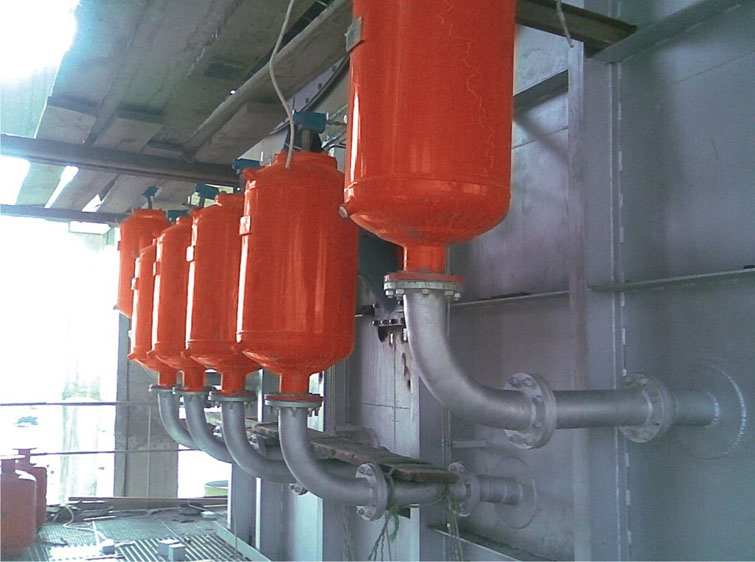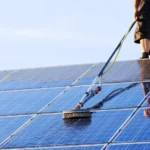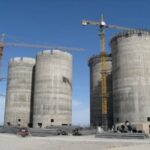FAQ on Maintenance Service for Air Blaster or Air Cannon

What is an air blaster or air cannon
An air blaster, also known as an air cannon, is a device used in various industries to clean or dislodge material buildup in silos, hoppers, chutes, or other confined spaces using bursts of compressed air.
Why is regular maintenance important for air blasters
Regular maintenance ensures the efficient operation and longevity of air blasters. It helps identify potential issues early, preventing costly breakdowns and downtime. Here’s why regular maintenance is essential for these devices:
- Optimal Performance: Regular maintenance helps ensure that air blasters operate at their peak efficiency. Over time, components such as valves, seals, and nozzles can wear down or become clogged with debris, reducing the effectiveness of the blasting action. By inspecting and cleaning these components regularly, operators can maintain consistent blasting force and efficiency, minimizing downtime and maximizing productivity.
- Prevention of Malfunctions: Without regular maintenance, air blasters are more prone to malfunctions and breakdowns. Minor issues such as leaks, clogs, or valve failures can escalate into major problems if left unaddressed, leading to costly repairs and unplanned downtime. Routine inspections and servicing allow operators to identify and rectify potential issues early, preventing more significant problems down the line.
- Extended Lifespan: Proper maintenance can significantly extend the lifespan of air blasters. By addressing wear and tear, lubricating moving parts, and replacing worn components as needed, operators can prolong the life of the equipment and maximize their return on investment. Regular maintenance helps prevent premature failure of critical components, reducing the frequency of replacements and avoiding costly equipment replacements.
- Safety: Maintaining air blasters in good working condition is essential for ensuring the safety of personnel and equipment. Malfunctioning or poorly maintained air blasters pose significant safety risks, including potential injuries to operators, damage to surrounding equipment or structures, and even the risk of explosions or fires in extreme cases. Regular safety checks and maintenance help identify and mitigate these risks, ensuring a safe working environment for all personnel.
- Compliance: In many industries, compliance with regulatory standards and safety regulations is mandatory. Regular maintenance is often a requirement to ensure compliance with these standards. Failure to adhere to maintenance schedules or neglecting equipment servicing can result in fines, penalties, or even legal liabilities in the event of accidents or injuries.
- Operational Efficiency: Well-maintained air blasters contribute to overall operational efficiency in industrial processes. By ensuring consistent and reliable operation, maintenance helps minimize interruptions to production schedules, optimize material handling processes, and improve overall workflow efficiency. This, in turn, enhances productivity and reduces costs associated with downtime and inefficiencies.
- Customer Satisfaction: For industries that rely on the timely delivery of goods or services, maintaining operational equipment is critical for meeting customer expectations. Regular maintenance of air blasters helps ensure that production schedules are met, orders are fulfilled on time, and quality standards are maintained. Satisfied customers are more likely to return for repeat business and recommend the company to others, contributing to long-term success and growth.
How often should air blasters be serviced
The frequency of maintenance depends on factors such as usage intensity, operating conditions, and manufacturer recommendations. Typically, air blasters should undergo maintenance at least once every six months to a year. The frequency of servicing depends on several factors, each of which influences the maintenance schedule:
- Manufacturer Recommendations:
- Manufacturers typically provide guidelines regarding the recommended maintenance intervals for their equipment. These recommendations are based on factors such as the design of the equipment, the materials used, and anticipated wear and tear.
- It’s important to carefully follow these recommendations as they are tailored to ensure optimal performance and safety. Deviating from these guidelines could result in decreased efficiency, increased risk of malfunctions, or even equipment failure.
- Usage Intensity:
- The frequency of maintenance often correlates with the intensity of usage. Equipment subjected to continuous or heavy-duty operation may require more frequent servicing compared to those used sporadically or at lower capacities.
- Monitoring the usage patterns and workload of the air blaster or air cannon can help determine whether more frequent maintenance is necessary.
- Operating Conditions:
- Environmental factors play a significant role in determining the maintenance frequency. Harsh operating conditions such as high temperatures, humidity, exposure to corrosive materials, or abrasive particles can accelerate wear and degradation of components.
- Air blasters or air cannons operating in such environments may require more frequent maintenance to counteract the effects of these conditions and prevent premature failure.
- Performance Monitoring:
- Regular performance assessment is crucial for identifying any signs of deteriorating performance or potential issues. This includes monitoring parameters such as blasting force, cycle times, and consistency of operation.
- Any deviations from expected performance should prompt further inspection and potentially expedite the maintenance schedule to address underlying issues promptly.
- Inspection and Cleaning:
- Visual inspections should be conducted at regular intervals to check for signs of wear, damage, or contamination. This includes examining components such as nozzles, valves, seals, and air chambers.
- Cleaning of these components should also be performed as part of routine maintenance to remove debris, dust, or other particles that could impede functionality or cause clogs.
- Lubrication:
- Lubrication is essential for maintaining the smooth operation of moving parts and reducing friction and wear. Components such as valves, seals, and bearings may require periodic lubrication according to the manufacturer’s recommendations.
- Over-lubrication or using incompatible lubricants can lead to malfunctions or damage, so it’s important to adhere to specified lubrication intervals and product recommendations.
- Safety Checks:
- Safety features such as pressure relief valves, emergency shutdown systems, and interlocks should be inspected regularly to ensure they are functioning correctly. Failure of these safety mechanisms can pose significant risks to personnel and equipment.
- Any identified issues should be addressed promptly to maintain a safe working environment and prevent potential accidents or damage.
- Documentation:
- Maintaining detailed records of all maintenance activities is essential for tracking the maintenance history of the equipment. This includes recording dates of service, performed tasks, parts replaced, and any identified issues.
- Comprehensive documentation facilitates proactive maintenance planning, ensures compliance with regulatory requirements, and provides valuable insights into the equipment’s performance and reliability over time.
- Professional Assistance:
- While some maintenance tasks can be performed by in-house personnel, certain complex procedures or specialized inspections may necessitate the involvement of qualified technicians or service providers.
- Engaging professionals with expertise in air blaster or air cannon maintenance ensures that the equipment is serviced correctly, minimizing the risk of errors or oversights that could compromise performance or safety.
What are the common maintenance tasks for air blasters
Common maintenance tasks include:
- Visual Inspection:
- Conduct regular visual inspections of the entire air blaster system, including valves, hoses, fittings, and the air chamber, to identify any signs of wear, damage, or corrosion.
- Look for cracks, leaks, loose connections, or any other abnormalities that may indicate the need for further inspection or repair.
- Cleaning:
- Clean the components of the air blaster system regularly to remove dust, debris, and other contaminants that can affect performance.
- Pay particular attention to the nozzle, valve, and air chamber, ensuring they are free from obstructions that could impede airflow or cause clogs.
- Lubrication:
- Lubricate moving parts such as valves, seals, and bearings according to the manufacturer’s recommendations.
- Use appropriate lubricants to reduce friction, prevent wear, and ensure smooth operation of the components.
- Testing:
- Conduct functional tests of the air blaster system to ensure all components are operating correctly.
- Test the activation mechanism, valve operation, and blasting force to verify that the system functions as intended.
- Pressure Testing:
- Periodically perform pressure tests to check for leaks, pressure drops, or other issues that may affect the performance of the air blaster system.
- Use pressure gauges or other measuring devices to verify that the system maintains the required pressure levels during operation.
- Seal Inspection and Replacement:
- Inspect seals and gaskets for signs of wear, deterioration, or damage.
- Replace worn or damaged seals to prevent air leaks and ensure proper sealing of the system.
- Valve Maintenance:
- Check valves for proper operation, including opening and closing smoothly without sticking or binding.
- Clean or replace valves as needed to maintain optimal performance and prevent malfunction.
- Safety Checks:
- Inspect safety features such as pressure relief valves, emergency shutdown systems, and interlocks to ensure they are functioning correctly.
- Verify that safety mechanisms are in place and operational to prevent accidents or equipment damage.
- Documentation:
- Keep detailed records of maintenance activities, including dates of service, performed tasks, and any issues identified.
- Document any replacements of components, adjustments made, or repairs performed to maintain a comprehensive maintenance history of the air blaster system.
- Professional Inspection:
- Schedule periodic inspections by qualified technicians or service providers to perform more in-depth assessments of the air blaster system.
- Engage professionals to identify potential issues, perform preventive maintenance, and address any concerns to ensure the system’s continued reliability and safety.
How can I identify if my air blaster needs maintenance
Signs indicating the need for maintenance include:
- Decreased performance or effectiveness in material discharge
- Unusual noises during operation
- Leaks or loss of compressed air
- Visible wear or damage to components
- Changes in pressure or airflow readings
Can I perform maintenance on my air blaster myself, or should I hire a professional
Basic maintenance tasks such as visual inspection, cleaning, and lubrication can often be performed by trained personnel within your organization. However, for more complex tasks like calibration or component replacement, it’s advisable to consult or hire a qualified technician.
What safety precautions should be taken during maintenance
Safety is paramount when working with compressed air systems. Ensure that the air supply is isolated and depressurized before performing any maintenance. Wear appropriate personal protective equipment (PPE), such as safety glasses and gloves, and follow all safety guidelines outlined in the equipment manual.
How long does maintenance typically take
The duration of maintenance varies depending on the complexity of tasks involved and the condition of the air blaster. Routine maintenance may take a few hours, while more extensive overhauls or repairs could take longer.
What are the benefits of regular maintenance for air blasters
Regular maintenance offers several benefits, including:
- Enhanced performance and efficiency
- Increased equipment lifespan
- Reduced risk of unexpected breakdowns and production downtime
- Improved safety for personnel and equipment
- Compliance with industry regulations and standards
Can I set up a maintenance schedule for my air blaster
Yes, setting up a maintenance schedule is highly recommended. Consult the manufacturer’s guidelines and consider factors such as operating environment, usage frequency, and past maintenance records to establish an appropriate schedule for inspections, lubrication, and other maintenance tasks.
How much does maintenance typically cost
The cost of maintenance varies depending on factors such as the extent of service required, the complexity of the equipment, and whether any replacement parts are needed. It’s advisable to budget for routine maintenance as part of your overall operational expenses.
Where can I find replacement parts or service for my air blaster
Replacement parts and service for air blasters are typically available from authorized distributors or directly from the manufacturer. Ensure that any replacement parts meet the specifications and standards required for your specific air blaster model.
Can I extend the lifespan of my air blaster through regular maintenance
Yes, regular maintenance can significantly extend the lifespan of your air blaster by ensuring optimal performance and identifying potential issues before they escalate into major problems.
What are some common mistakes to avoid during air blaster maintenance
Common mistakes include neglecting to follow manufacturer guidelines, using incorrect lubricants or parts, overlooking safety protocols, and attempting repairs beyond one’s expertise. It’s essential to adhere to best practices and seek professional assistance when necessary.
Is there any warranty coverage for maintenance-related issues
Warranty coverage for maintenance-related issues varies depending on the manufacturer and the terms of the warranty agreement. Be sure to review the warranty documentation provided with your air blaster and consult with the manufacturer or authorized service provider as needed.




